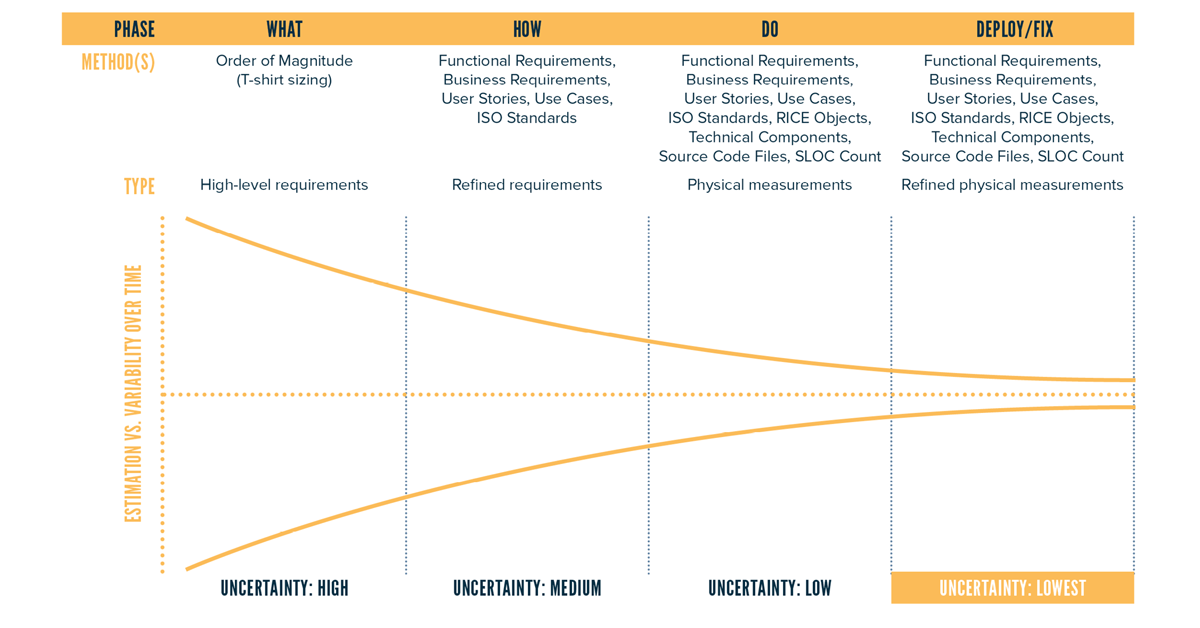Agile Development and Software Estimation: Two Processes That Go Great Together
This post was originally published on Linkedin. Join the QSM Linkedin Group and Company Page to stay up-to-date with more content like this.
New approaches to software development can sometimes seem at odds with the needs of business customers. For instance, ardent practitioners of the agile development methodology continue to advocate for rapid response approaches and the need for constant iteration to solve complex problems. On the other hand, companies and customers are demanding a strategic approach that provides insight into process, timing, and costs.
So, which of these yin and yang scenarios should developers employ? The answer is “both.”
Enter scope-based software estimation, which I maintain can be a powerful tool to ensure that projects remain on course and on budget. It is possible for schedule and budget estimation to be achieved without sacrificing any of the things that make agile development so potent.
Not everyone feels the same. Some would argue that there’s simply no place for estimates in an agile development world; that estimates cannot coexist with agile or “lean” methodologies like Scrum, which encourage teamwork, speed, and communication without constraints.



 Recently a friend of mine sent me a link to a
Recently a friend of mine sent me a link to a  There are so many questions around agile planning, one of the biggest being: do we need an
There are so many questions around agile planning, one of the biggest being: do we need an 
